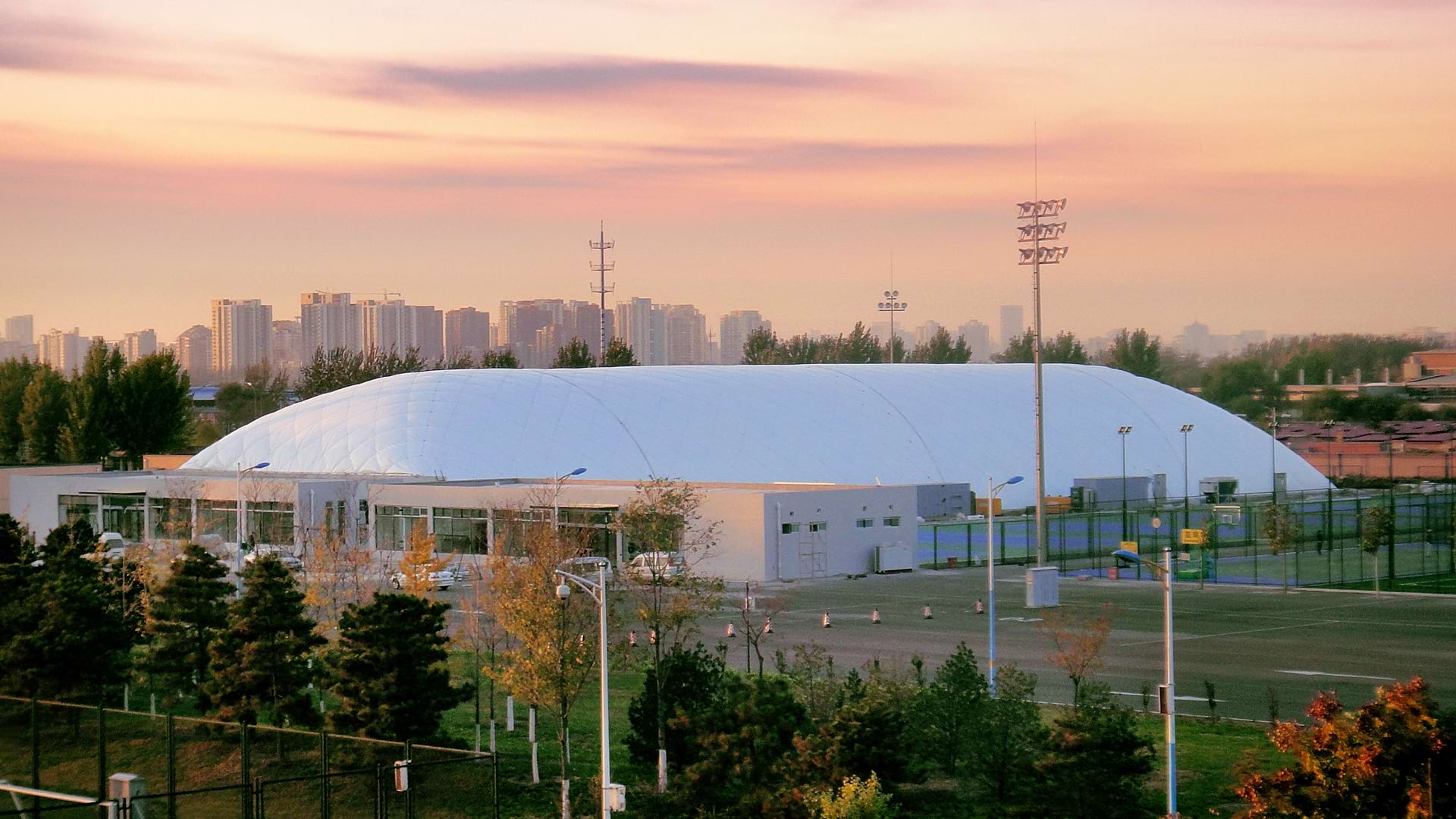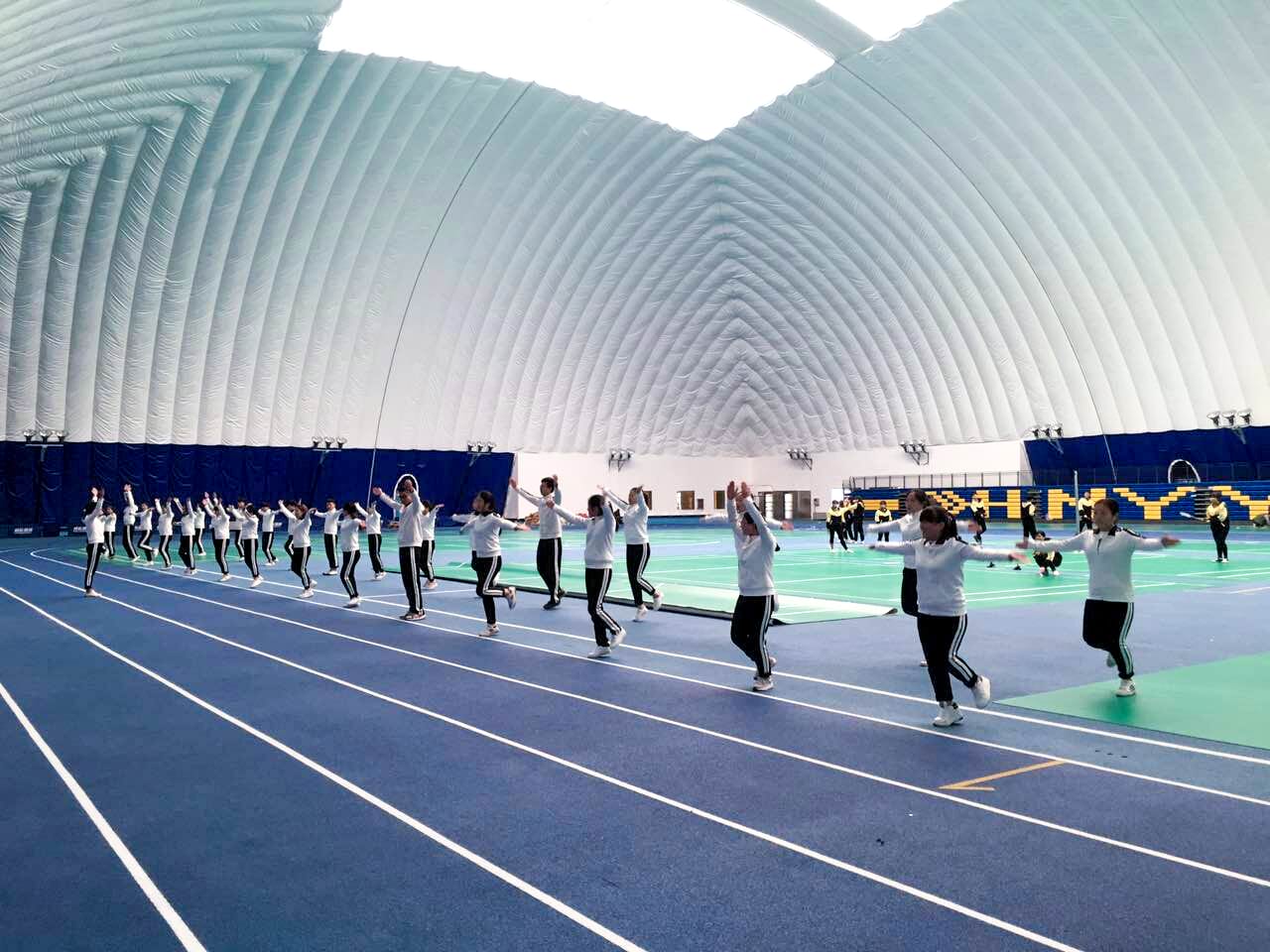The burgeoning demand for Air Domes has emerged as a pivotal force in the construction and environmental sectors, offering innovative solutions to a myriad of challenges. These structures, known for their adaptability and energy efficiency, are increasingly being recognized for their potential to reshape the way we inhabit and interact with our surroundings. This article delves into the current market demand for Air Domes, examining the factors that are driving their growth and identifying the trends that are likely to shape their future. We begin by providing a snapshot of the Air Domes market, highlighting its size and the key players that are currently setting the pace. Consumer preferences are scrutinized to understand the driving forces behind the demand, with a focus on the technological advancements that are enabling these structures to meet and exceed expectations. As we progress, we will explore the market trends that are propelling Air Domes to the forefront, discussing the challenges they face and the opportunities they present. This comprehensive analysis aims to offer a clear perspective on the potential growth areas within the Air Domes market, providing valuable insights for stakeholders ranging from investors to policymakers. By the end of this exploration, we anticipate not only a deeper understanding of the current landscape but also a glimpse into the promising horizons that lie ahead for Air Domes.
Current Market Analysis of Air Domes
The market for Air Domes is experiencing a surge in demand, driven by their unique blend of environmental sustainability and structural versatility. As of the current landscape, the market size for Air Domes has expanded significantly, with a notable increase in both residential and commercial applications. The industry has seen a proliferation of players, ranging from small-scale manufacturers to large corporations, each bringing a diverse array of Air Dome solutions to the table.
One of the key factors contributing to the market's growth is the consumer preference for eco-friendly and space-efficient designs. Air domes, with their minimal environmental footprint and ability to be easily deployed in various settings, are meeting these demands head-on. The technology underpinning these structures has also matured, with advancements in materials science leading to more durable, energy-efficient, and cost-effective Air Domes.
An analysis of the current market reveals a strong inclination towards the use of Air Domes in disaster relief, temporary housing, and climate-controlled agricultural environments. Their ability to provide shelter with minimal infrastructure requirements makes them an attractive option for rapid deployment in emergencies. Additionally, the commercial sector has taken note of Air Domes' potential for creating unique, customizable spaces for events, retail, and even as innovative office solutions.

Despite the positive trajectory, the market is not without its challenges. Issues such as the need for standardized regulations, the high initial costs associated with cutting-edge materials, and the necessity for public awareness and acceptance are areas that require attention. However, these challenges also present opportunities for innovation and growth, as companies and governments alike work towards solutions that can make Air Domes more accessible and economically viable.
Market Trends
In examining the market trends within the Air Domes industry, several growth drivers can be identified. Primarily, the increasing demand for versatile and cost-effective sports facilities is propelling the market forward. Air Domes offer an economical alternative to traditional brick-and-mortar structures, providing the flexibility to host multiple sports events in regions with unpredictable weather conditions, thereby extending their usability across seasons. Additionally, advancements in material technology have significantly improved the durability and energy efficiency of these structures, enhancing their appeal to environmentally conscious consumers and organizations looking to reduce their carbon footprint.
However, the market faces certain challenges that could impede its growth. The initial setup cost, while lower than permanent facilities, still represents a significant investment for many potential buyers, particularly small-scale sports organizations and schools with limited budgets. Furthermore, the perception of Air Domes as less durable or secure compared to permanent structures can also limit market adoption.
Despite these challenges, there are substantial opportunities in the market. The growing popularity of year-round sports activities and the expansion of recreational facilities in urban areas provide a fertile ground for the expansion of Air Domes. There is also a burgeoning opportunity in regions recovering from natural disasters, where quick-to-deploy, temporary sports and recreational facilities are needed. Innovations focused on enhancing structural resilience and energy efficiency could also open new market segments, appealing to a broader range of clients concerned with sustainability and long-term operational costs. This blend of challenges and opportunities will dictate the strategic directions that stakeholders in the Air Domes market might pursue to capitalize on its growth potential.
Emerging Markets
As the global landscape evolves, the demand for Air Domes in emerging markets is rapidly increasing. Countries in Asia and Africa, experiencing rapid urbanization and growth in middle-class populations, are seeing a heightened need for recreational and community centers. Air Domes provide a viable solution for these areas, where traditional infrastructure may be cost-prohibitive or time-consuming to construct. The adaptability of Air Domes to serve multiple purposes—from sports arenas to community event spaces—makes them particularly attractive in these fast-developing regions.
Innovative Applications
Beyond traditional uses, Air Domes technology is poised to explore innovative applications. One such area is in disaster relief operations, where quick deployment of safe, weather-resistant shelters can greatly benefit affected communities. Additionally, there is potential for using Air Domes in agricultural sectors, such as large-scale portable greenhouses, which can revolutionize farming practices by providing controlled environments, thus extending growing seasons in colder climates.
Sustainability Potential
Sustainability remains a core advantage of Air Domes. Their ability to be dismantled, moved, and reused aligns perfectly with the principles of sustainable development. Enhanced material technologies not only reduce the energy costs associated with heating and cooling but also minimize the ecological footprint of construction projects. By integrating renewable energy sources such as solar panels, Air Domes can further enhance their sustainability, meeting the growing demand for green infrastructure solutions in both developed and developing markets.

Competitive Landscape
The Air Domes market features a diverse array of competitors, ranging from specialized companies that focus solely on inflatable structures to large-scale sports and recreation infrastructure providers. Key players often compete on factors such as pricing, technological innovation, and after-sales services. Companies with advanced material technology and superior design capabilities tend to dominate the market, as these characteristics directly influence the longevity and functionality of the domes.
Differentiation Strategies
To carve out a competitive edge, companies within the Air Domes sector can adopt several differentiation strategies. One effective approach is to emphasize customizability. Offering tailor-made solutions that cater specifically to the unique needs of different sports facilities, educational institutions, or event organizers can significantly attract clients looking for more than just standard options. Furthermore, integrating smart technologies like climate control systems, energy-efficient lighting, and even IoT-enabled monitoring tools can enhance the appeal of Air Domes, making them more than just physical structures but part of a connected, smart environment.
Investing in eco-friendly materials and promoting the sustainability aspect of Air Domes can also serve as a key differentiator. As awareness and regulations around environmental impact intensify, companies that position themselves at the forefront of sustainable practice stand to gain substantial market share. Additionally, partnerships with local and international sports leagues and events can boost brand visibility and credibility, helping companies to stand out in a crowded market. Through these strategies, businesses in the Air Domes market can not only differentiate themselves from their competitors but also add significant value to their offerings, enhancing their overall market positioning.
Future Outlook and Recommendations with a Focus on Broadwell Air Dome Company
As we project into the future, the Air Domes market is anticipated to continue its upward trajectory, driven by technological innovation, evolving consumer preferences, and the pressing need for sustainable solutions. The integration of smart technologies, such as IoT and AI, is expected to revolutionize the functionality of Air Domes, enabling them to adapt to environmental changes and user needs in real-time. This will not only enhance the appeal of Air Domes but also open up new avenues for market expansion.
Investors eyeing this market are advised to focus on companies that demonstrate a commitment to innovation and sustainability. One such company to watch is Broadwell Dome Company, a pioneer in the air dome industry. Broadwell Dome Company has distinguished itself by leveraging advanced engineering techniques to produce Air Domes that are not only structurally robust but also energy-efficient and aesthetically pleasing. Their domes are designed to withstand extreme weather conditions and are equipped with renewable energy systems, making them an ideal choice for eco-conscious consumers and forward-thinking businesses.
For policymakers, the recommendation is to create an enabling environment for the Air Domes industry to thrive. This includes providing incentives for research and development, fostering public-private partnerships, and establishing clear regulatory frameworks that encourage innovation while ensuring safety and quality standards.
In conclusion, the future of Air Domes is bright, with companies like Broadwell Dome Company leading the charge in redefining the possibilities of sustainable living and working spaces. By embracing the potential of Air Domes, we can look forward to a future where our built environment is more adaptable, resilient, and harmonious with the natural world.










